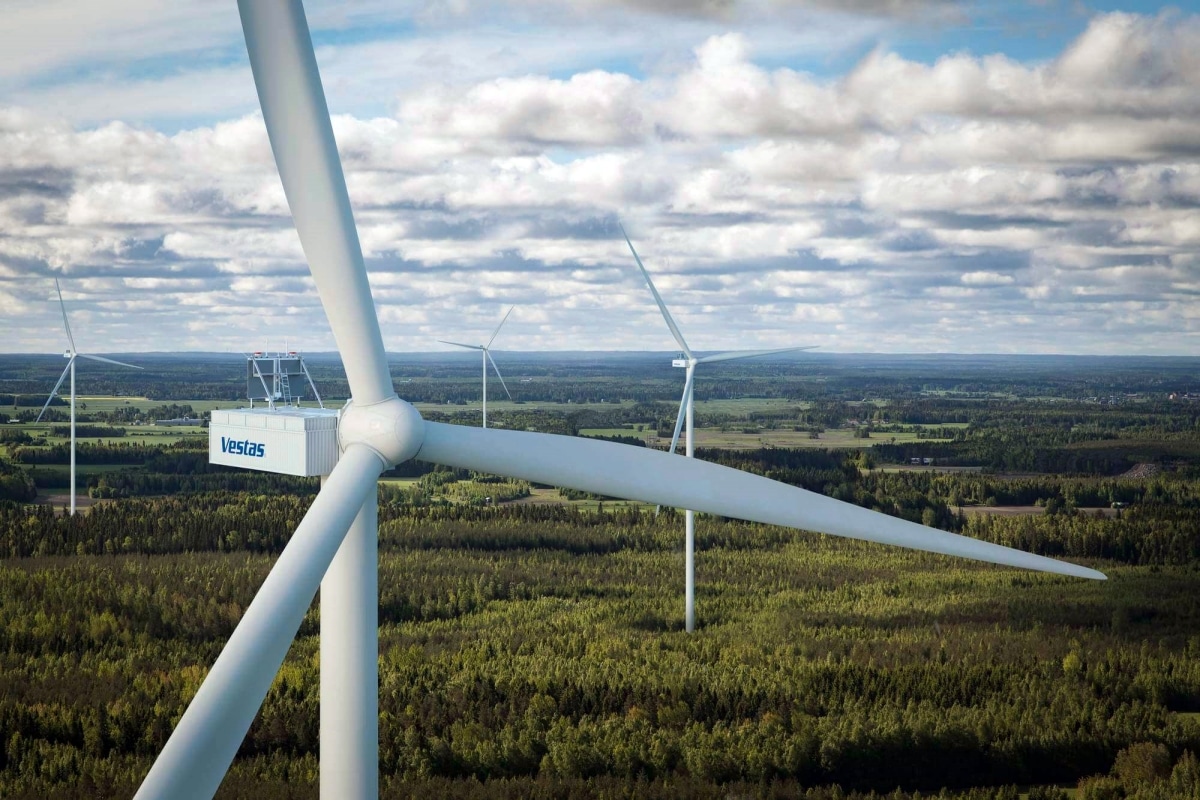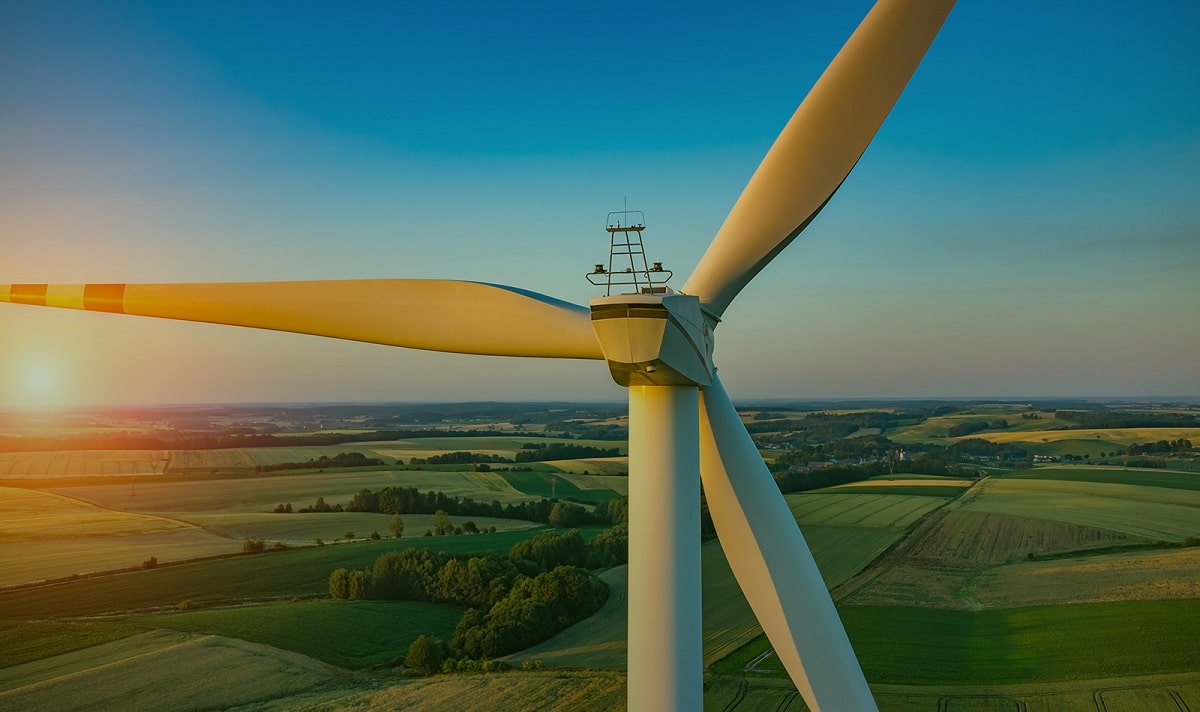
Contents
The Gansu Wind Complex, China
The Gansu Wind Complex stands as a testament to China’s commitment to renewable energy and sustainable development. Located in the Gansu Province, this colossal wind energy project is a shining example of how a country can harness its vast natural resources to address its growing energy demands while simultaneously reducing its carbon footprint. This article delves into the details of the Gansu Wind Complex, highlighting its significance, the technologies it employs, its environmental impact, and its role in China’s ambitious green energy strategy.
Unveiling the Giant: Gansu Wind Complex
The Gansu Wind Complex is one of the world’s largest wind power installations, covering vast expanses of the Gansu Province in northwestern China. With its staggering scale, it comprises numerous interconnected wind farms, each with a sea of towering wind turbines. Collectively, these turbines generate an astounding amount of clean electricity. The Gansu Wind Complex is strategically located in an area known for its strong and consistent wind patterns, making it an ideal site for wind energy generation.
Technical Specifications
The scale of the Gansu Wind Complex is truly awe-inspiring. It boasts over 7,000 wind turbines, most of which are three-bladed, horizontal-axis designs. These turbines are spread across various wind farms, covering approximately 39,000 square kilometers of land. Their combined capacity exceeds 22 gigawatts, making it a cornerstone of China’s renewable energy infrastructure. The complex includes turbines from a range of manufacturers, each contributing to the diversity and resilience of the network.
Integration of Advanced Technology
The Gansu Wind Complex doesn’t just rely on the quantity of turbines; it also leverages cutting-edge technology to optimize energy production. Advanced data analytics, artificial intelligence, and predictive maintenance systems are employed to monitor the turbines, ensuring they operate efficiently and minimizing downtime. The complex also uses high-voltage direct current (HVDC) transmission lines to transport the electricity generated over long distances, increasing efficiency and reducing energy losses during transmission.
Environmental Benefits
One of the most significant advantages of the Gansu Wind Complex is its positive environmental impact. By generating clean, renewable energy, it contributes substantially to the reduction of greenhouse gas emissions. It helps China in its efforts to combat air pollution and curb its carbon footprint, aligning with global climate goals. The reduction in the use of fossil fuels also decreases the need for coal-fired power plants, which have been a major source of pollution and carbon emissions in China.
Sustainable Development and Economic Growth
Apart from environmental benefits, the Gansu Wind Complex promotes sustainable development in the Gansu Province. The construction and maintenance of the wind farms create jobs and stimulate the local economy. Additionally, it fosters the development of a domestic wind turbine industry, reducing the country’s dependence on foreign technology. By investing in renewable energy projects like this, China not only addresses its energy needs but also positions itself as a global leader in green technology.
Challenges and Future Prospects
While the Gansu Wind Complex is a remarkable achievement, it faces challenges such as integrating intermittent energy sources into the grid, balancing supply and demand, and mitigating environmental impacts on local wildlife. Continuous innovation in energy storage and grid management will be essential to fully realize the potential of this massive renewable energy project.
China’s Commitment to Green Energy
The Gansu Wind Complex is a prime example of China’s dedication to transitioning towards a greener, more sustainable energy future. This project, alongside other renewable energy initiatives, reflects China’s ambitious goals to reach peak carbon emissions by 2030 and become carbon neutral by 2060. The Gansu Wind Complex demonstrates that even in a country with massive energy demands, it is possible to harness the winds of change and create a cleaner, more sustainable future.
The Gansu Wind Complex in China is not just a testament to the country’s engineering prowess but also a symbol of its commitment to a greener, more sustainable future. This colossal wind energy project serves as a global inspiration, showcasing the remarkable potential of harnessing wind power on a grand scale. As China continues to lead the world in renewable energy projects like this, it paves the way for a cleaner and more sustainable energy landscape for all.

Alta Wind Energy Center, California (USA)
The Alta Wind Energy Center, located in the Mojave Desert of California, is one of the most significant wind energy developments in the United States. This sprawling wind farm is a testament to California’s commitment to renewable energy and reducing its carbon footprint. In this article, we’ll explore the Alta Wind Energy Center’s history, significance, and the role it plays in California’s clean energy landscape.
A Windy Oasis in the Mojave Desert
The Alta Wind Energy Center, often referred to as Alta Wind or AWEF, is situated in Kern County, California, approximately 50 miles northwest of Lancaster. This vast expanse of wind turbines covers more than 3,000 acres of desert landscape and is strategically located in an area known for its consistent and strong winds.
History and Ownership
The Alta Wind Energy Center began its development in the early 2010s and has seen remarkable growth and expansion since its inception. The project is owned and operated by Terra-Gen, a leading renewable energy company that specializes in wind, solar, and geothermal energy projects. Terra-Gen has made substantial investments in Alta Wind, turning it into a hub for clean energy production.
Alta Wind’s Remarkable Scale
What sets Alta Wind apart from other wind farms is its sheer scale. The facility is home to hundreds of wind turbines, making it one of the largest wind farms in the world. The total installed capacity of Alta Wind exceeds 1,500 megawatts, and the wind turbines are strategically placed to harness the region’s powerful winds efficiently.
Environmental Impact and Clean Energy Generation
Alta Wind plays a pivotal role in California’s efforts to reduce its greenhouse gas emissions and transition to clean, renewable energy sources. The electricity generated at Alta Wind is sent to the California grid and is used to power homes, businesses, and industries throughout the state. This substantial clean energy contribution aids California in achieving its ambitious renewable energy goals, including the California Renewable Portfolio Standard, which aims to have 100% clean energy by 2045.
Economic Benefits
Beyond its environmental impact, the Alta Wind Energy Center provides economic benefits to the region. The wind farm has created jobs during its construction and ongoing operation, and it continues to stimulate economic growth in Kern County. Moreover, wind energy projects like Alta Wind help diversify the local economy, reducing the area’s reliance on traditional industries.
Technological Advancements
The wind turbines at Alta Wind are a testament to the rapid advancements in wind energy technology. These turbines are equipped with state-of-the-art features, including larger blades for increased efficiency, advanced control systems, and robust gearboxes. These innovations not only enhance energy production but also contribute to the sustainability and longevity of the wind farm.
Challenges and Sustainability
While Alta Wind is a remarkable example of renewable energy success, it does face some challenges. The intermittent nature of wind energy can sometimes pose difficulties in matching electricity supply with demand. To address this, the facility utilizes energy storage solutions, such as battery systems, to store excess energy for use during periods of lower wind generation.
Future Expansion and Innovation
Terra-Gen continues to invest in Alta Wind, exploring opportunities for expansion and technological improvements. As renewable energy technology continues to evolve, Alta Wind is expected to remain at the forefront of wind energy production, serving as a shining example of what’s possible when it comes to harnessing the power of the wind.
The Alta Wind Energy Center stands as a testament to California’s commitment to renewable energy and its efforts to combat climate change. This sprawling wind farm not only generates clean electricity for the state but also provides economic opportunities and drives innovation in the renewable energy sector. As California strives to achieve its ambitious clean energy goals, Alta Wind will undoubtedly play a significant role in shaping the future of sustainable power generation in the state and beyond.
Muppandal Wind Farm, Tamil Nadu, India
Located in the southernmost region of India, in the Kanyakumari district of Tamil Nadu, is the modest town of Muppandal. Nestled in a mountainous area, the city is exposed to the gusts of wind from the Arabian Sea through the mountain passes.
The city, which was in a state of extreme poverty, saw significant improvement after the construction of the Muppandal wind farm. This wind farm supplies electricity to the inhabitants and businesses of the town and surrounding areas. The city was chosen as a model example for India’s $2 billion clean energy initiative, which offers tax incentives to foreign companies to set up wind farms. The Muppandal wind farm has an installed capacity of 1,500 MW and is expected to generate approximately 26,200 MWh of electricity in 2020.
The reason behind Muppandal’s ideal positioning for wind farms is its geographical location, which allows exposure to monsoon winds during specific seasons. Additional locations have been identified in and around Muppandal for erecting windmills, and the projected capacity for wind power generation is estimated to be around 1,500 MW, which is approximately 20% of India’s total capacity.
Jaisalmer Wind Farm, Rajasthan, India
Located in the Jaisalmer district of Rajasthan, it is the second largest operational onshore wind farm in India and has an impressive installed capacity of 1,064 MW. Suzlon Energy, the developer behind the project, began development in August 2001 and covers a wide range of Suzlon’s wind portfolio, from the most recent 350 kW model to the S9X, with 2.1 MW as standard. This wind farm is the fourth largest onshore wind farm in the world.
On April 1, 2021, the installation was completed, with a total installed power of 1,064 MW. At that time, it was the largest wind farm in India. However, the title of India’s largest wind farm currently belongs to the Muppandal park.
Shepherds Wind Farm, Oregon (USA)
Located in Arlington, eastern Oregon, the Shepherds Flat Wind Farm is the fifth largest wind farm in the world and has an installed capacity of 845 MW. Caithness Energy engineers developed the project on land spanning more than 77 km², spanning Gilliam and Morrow counties. The project began construction in 2009, with an estimated cost of $2 billion. In October 2010, the US Department of Energy provided a $1.3 billion loan guarantee, the largest financing ever for the construction of a wind farm.
Since September 2012, the wind farm has been operational. Its 338 GE2.5XL turbines each have a nominal capacity of 2.5 MW and their combined energy output is supplied to Southern California Edison for distribution. Simply put, the renewable energy generated by the wind farm is enough to meet the electrical needs of more than 235,000 homes.
I hope that with this information you can learn more about the largest wind farms in the world and their characteristics.



